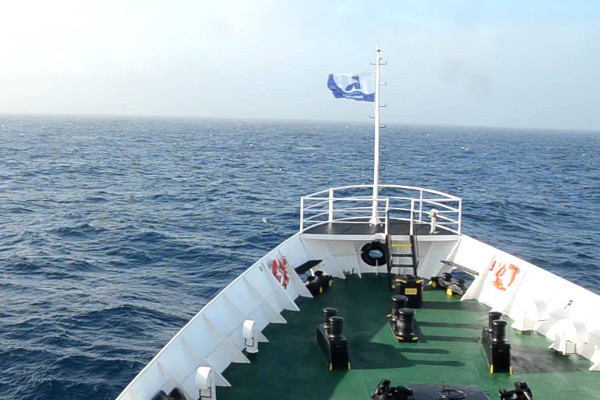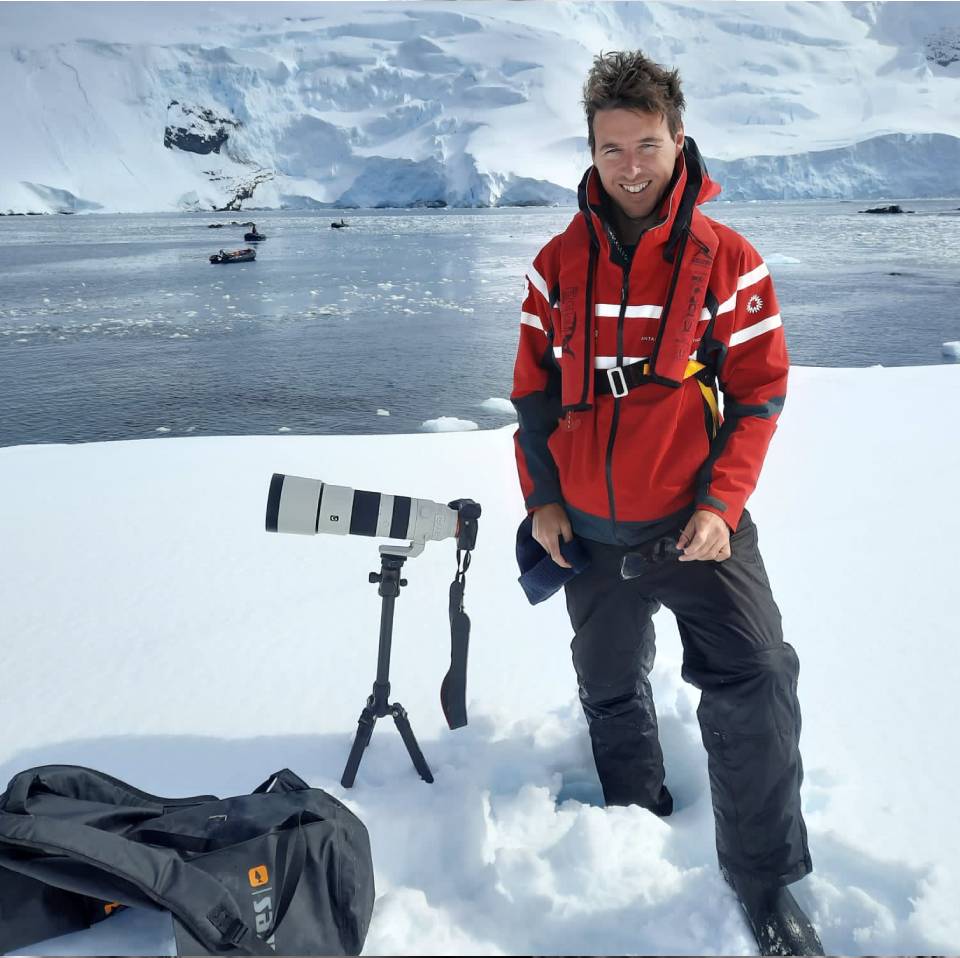Drake Passage seasickness is certainly something that many people experience. However, it can be combatted.
Anyone who suffers from sea sickness will know what an awful experience it can be. Because of the notoriously rough Drake Passage which all Antarctica cruises pass through, many sea sickness sufferers are often put off from ever visiting Antarctica.
Though everyone reacts differently to Drake Passage sea sickness, the last thing you want is for sea sickness to spoil or even prevent your Antarctica cruise.
Below, we have provided a comprehensive page on how to combat sea sickness during your Antarctica cruise.
With some top tips and recommended medications for minimising the horrible effects of sea sickness, we have tried to cover all options to make your cruise as smooth as possible!
The Drake Passage – Sea Sickness
Antarctica cruise operators will often warn that the infamous Drake Passage only has two moods: the ‘Drake Shake’ or the ‘Drake Lake’, with the latter being quite rare.
Spanning 600 miles between Cape Horn and the South Shetland Islands, this unforgiving body of water is often extremely rough, able to turn even the strongest of stomachs.
The Antarctic Circumpolar Current flows west to east around Antarctica and is the largest ocean current in the world. One of the reasons the Drake Passage is so rough is due to the vast volume of water travelling through this bottleneck; approximately 600 times the flow of the Amazon river.
With no land surrounding the latitudes of the Drake Passage to break it’s flow, combined with strong winds and unpredictable weather, Drake Passage sea sickness is often an inevitability. The Drake Passage can experience up to 15m swells and winds reaching Beaufort scale 10 (hurricanes are scale 12) at its peak.
Most Antarctica cruise ships have stabilizers to reduce these rough sea conditions, but it is needless to say these will not stop the effects of Drake Passage sea sickness. As such, many passengers see their Drake Passage voyage as a rite of passage on their Antarctica cruise.
Travelling across the Drake Passage will take 2 days in good conditions but this is entirely weather-dependent and could be longer. Unpredictability is Drake Passage’s middle name, so we fully advise to come prepared!
In any case, crossing the Drake Passage shouldn’t stop you from visiting Antarctica.
Once you are across the Drake Passage, as soon as you reach the sub-Antarctic islands and the Antarctic Peninsula, the waters should become much calmer and the effects of Drake Passage sea sickness will diminish considerably.
Get a Cruise Quote!
Antarctica Guide do not sell tours, we simply provide impartial advice. If you would like an exact quote with our recommended specialist click Get a Quote.

Before you go
Even if it’s not full-blown sea sickness, the majority of passengers will feel queasy on their Antarctica cruise. Discuss this with your doctor before you embark upon your trip and ask them to prescribe an effective sea sickness medicine for you.
Make sure that they provide you with enough medicine for the whole trip and remember to check the dosage requirements before you leave as sea sickness medicine often has to be taken prior to setting off.
Of course, on your Antarctica cruise ship, there will be doctors in case you need them and a medical clinic with common prescription medicines and first aid equipment.
However, Antarctica cruise operators cannot be held responsible for not having a specific brand of medicine on board, so it’s always best to take whatever medicines you might need and to buy sea sickness medication before you go.
Recommended sea sickness medication
One of the most effective sea sickness medicines out there is the transderm scopolamine patch which is placed just behind the ear and lasts for three days.
It works by gradually releasing a drug which helps to prevent the nausea and vomiting associated with sea sickness. It is most effective when used four hours prior to your trip and one great feature is that it’s unlikely to cause drowsiness.
Antihistamine medicines such as Dramamine (meclizine hydrochloride) 25mg tablets or Phenergan (promethazine) 25mg tablets are also effective in reducing the effects of seasickness.
Taken up to one hour prior to your trip, one dose of Dramamine lasts for 24 hours. Phenergan should also be taken one hour before departing and a single dose lasts for 12 hours.
Please be aware that antihistamine medicines like this can often cause drowsiness so always check the potential side effects before taking them.
Drake Passage sea sickness on your Antarctica cruise can also be avoided using an electronic wristband called the ReliefBand Voyager, an FDA approved variation of the acupressure band.
Worn 2 inches up the wrist, these bands emit adjustable electrical signals to help control nausea and begin working within minutes, offering immediate sea sickness relief.
Ginger is also a natural anti-emetic commonly used to prevent sea sickness. Taking a ginger supplement, drinking ginger tea or eating ginger biscuits may be effective in helping to stop the effects of sea sickness on your Antarctica cruise.
Get a Cruise Quote!
Antarctica Guide do not sell tours, we simply provide impartial advice. If you would like an exact quote with our recommended specialist click Get a Quote.
Top tips on how to tackle sea sickness
If you are prone to sea sickness, try to get a good night sleep before boarding your Antarctica cruise ship and make sure you are well-hydrated to avoid headaches and migraines.
Try to eat small meals the day before and also avoid alcohol, tobacco and greasy food throughout your Antarctica cruise.
When you board your Antarctica cruise ship, pack away any bulky items carefully to make sure they aren’t dislodged later on and ensure your sea sickness medicine is easily accessible. Make sure your cabin is well-ventilated and try to avoid spending too much time below deck as this can bring on sea sickness symptoms.
During the first leg of your Antarctica cruise, you will be passing through the Beagle Channel which is usually very calm. At this early stage, get as much fresh air as possible and only eat a light meal.
For your first night on board, you may want to take some sea sickness medication before you go to bed or something to help you sleep.
As you move out of the Beagle Channel and travel into open waters, sea sickness symptoms may start to arise. If you do feel queasy, lie down to rest and use a pillow to keep your head as still as possible.
Going onto deck to get some fresh air may also help but remember that on multi-level cruise ships, the higher up you are, the more rocking motion you will feel.
When outside on deck, focus on the horizon and keep one hand on a steady rail. This can help to recalibrate your motion sensors and reduce dizziness.
Taking a ginger supplement may stop you from feeling sea sick and closing your eyes may also help. Keep hydrated and try to relax – remember the Drake Passage crossing is finite!
It is unlikely that you will suffer sea sickness around the Antarctic Peninsula and you should get your sea legs after a few days.
Conclusion
Despite the fact that Drake Passage sea sickness is very probable during your Antarctica cruise, with the right medication and preventative steps taken during your journey, the effects can be neutralized.
The stunning sites and wildlife you will get to see on your Antarctica cruise will far outweigh the short period of sea sickness and we can pretty much guarantee your trip will be worth it!
However, if you do suffer very severely from sea sickness and are still concerned, there is always the option to fly to Antarctica and board a cruise there. Check out the Antarctica Express Cruise to explore this option further.
FAQ
If you have any further questions or queries regarding sea sickness on your Antarctica cruise, please just leave a message below and we’ll get back to you within 24 hours.
Thank you and happy travelling!




Wendy Reiner says
8 years ago
Burnham Arlidge says
8 years ago
Sarah Hunt says
7 years ago
Burnham Arlidge says
7 years ago
P says
6 years ago
Burnham Arlidge says
6 years ago
Judith Porter says
6 years ago
Burnham Arlidge says
6 years ago
Ernest Simmons says
6 years ago
Burnham Arlidge says
5 years ago
The Outrigger says
6 years ago
Burnham Arlidge says
6 years ago